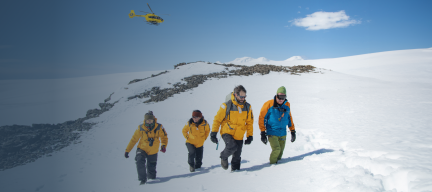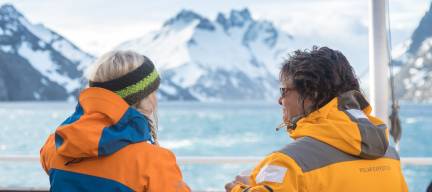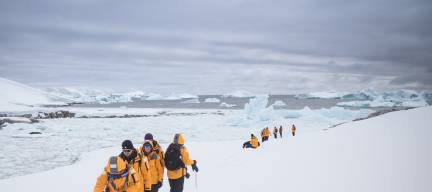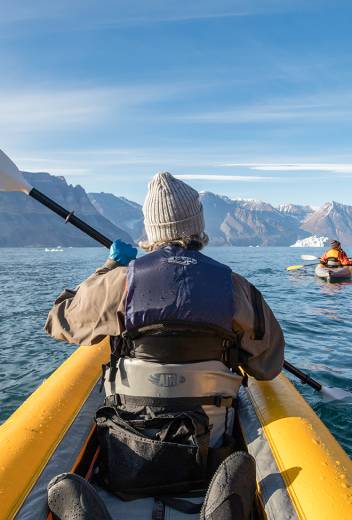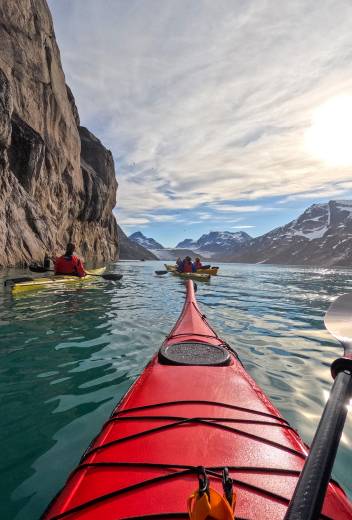Antarctic Marine Mammals The World of Whales and Seals
Starting from
- Buenos Aires, Argentina
Ships
- World Voyager
Departures



















Expedition Overview
Our 11-day Antarctic Marine Mammals: The World of Whales & Seals itinerary offers guests the rare chance to actively engage in citizen science—while exploring the Antarctic Peninsula and South Shetland Islands. Co-developed by Ari Friedlaender, founder of the renowned Friedlaender Lab, this hands-on itinerary is designed to maximize observations of migratory whales, such as minke, humpback, and fin. A research associate from Happywhale will guide guests in identifying individual whales for global conservation projects. At the onboard Science Hub, guests connect with experts, participate in meaningful research, and help protect this pristine polar habitat for whales, seals, and all marine life.
Highlights
Engage with globally-respected scientists who are actively collecting data on Antarctic marine mammals, especially whales
Participate in hands-on marine mammal identification workshops
Explore highlights of the Antarctic Peninsula
Learn about Antarctic wildlife, history, geology and glaciology from onboard polar experts
In addition observing whales, witness penguins, seals and birds
Immerse yourself in the icy realm of the Antarctic with an optional paddling excursion.
Science & Discovery
In addition to daily presentations by polar experts, this itinerary also features hands-on educational opportunities as part of our new Science & Discovery program.
Science & Discovery
A new initiative designed to foster community, curiosity and education. Beginning in 2026 on select World Voyager itineraries, Quark Expeditions is collaborating with leading scientists and researchers to enrich guest learning on- and off-ship.
Guest Engagement: Through researcher-led sessions, and interactive learning and field experiences with our expedition team, guests will gain a better understanding and appreciation of the polar wilderness.
This Science & Discovery program will enable guests to:
• Interact and connect with scientists and researchers who are actively collecting data during expeditions.
• Participate in citizen science programming to broaden their understanding and knowledge of the incredible polar ecosystem.
• Work with our expedition team to help collect and record data, ranging from experiences such as conducting seabird surveys on deck to documenting whale sightings on Zodiac excursions or joining interactive sampling activities to measure water conditions.
SCIENCE IN THE FIELD
Quark Expeditions is supporting academic research through partnerships with institutions such as Penguin Watch at Oxford Brookes University, and Friedlaender Lab at University of California Santa Cruz to deepen our understanding through access to projects that are contributing to published research and projects of high importance.
CITIZEN SCIENCE
To support the work of Happywhale, the Polar Citizen Science Collective, and other citizen science projects, guests can engage in meaningful scientific data collection that supports targeted field research.
QUARK SCIENCE HUB
Gather with scientists, researchers and expedition guides to share findings and insights from the voyage.
Engage with interactive digital displays featuring multimedia content for self-guided discovery even when staff aren't present.
Learn how data collection methods, such as drones, wildlife tags, and biopsy and guano sampling, enable us to study the health, population, and migratory pathways of unique birds, whales, seals and other Antarctic marine mammals.
Review and discuss observations and explore samples collected during science Zodiac cruises with other participants.
Marine Mammal Experts

Ari Friedlaender, Friedlaender Lab
Ari Friedlaender, founder of the Friedlaender Lab—the highly-respected marine mammal research group at the University of California—has been studying baleen whales in Antarctica since 1997. Friedlaender—who co-developed this itinerary—and his team of scientists utilize advanced biotelemetry technology, such as drones, suction-cup tags and biopsy equipment, to research whale movements, their health and feeding habits. Friedlaeder and his team are shaping the future of whale conservation. Throughout this voyage, these scientists will collect new data about local whale populations and share historical and live satellite data for tags deployed in previous seasons, while actively tracking whales in the region. This information will be shared through daily recaps, and made available at the Science Hub located on deck 4. Learn more about the Friedlaender Lab.

Research Associate, Happywhale
We will be joined by a research associate from Happywhale, a scientific web platform where users upload photographs of whale tails—which have unique markings—to identify individual whales and track their movements. Guests, with basic instruction from the Happywhale expert, will be able to contribute to the digital crowd sourced database, and learn how it contributes to a better understanding of whale migratory patterns. Feel free to register in advance of your expedition. Visit Happywhale.com
Find Your Ideal Itinerary
From Buenos Aires, Argentina, 11 days, on World Voyager
- Duration
- 11 days
- Departing from
- Buenos Aires, Argentina
- Ship
-
World Voyager
Learn more about the ship - Starting from
- $11,950 USD per person

From Buenos Aires, Argentina, 11 days, on World Voyager
- Duration
- 11 days
- Departing from
- Buenos Aires, Argentina
- Ship
-
World Voyager
Learn more about the ship - Starting from
- $12,492 USD per person

Adventure Activities
Included Activities

Zodiac Cruising

Hiking
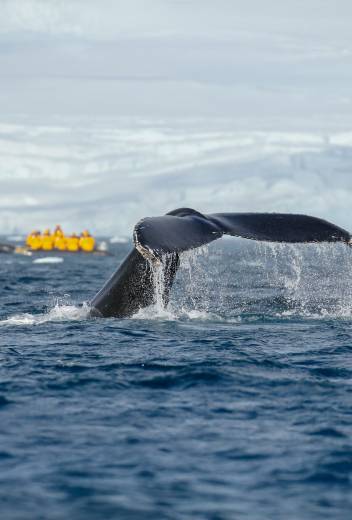
Science and Discovery

Polar Plunge

Presentations

Photography
Adventure Options
These can be booked in advance at an extra cost. Activities vary by itinerary, destination and are weather permitting.
World Voyager
Ship Amenities
- Ready Room
- Sauna
- Spa
- Polar Boutique
- Lecture Theater
- Dining Room
- Observation Lounge
- Gym
- Pool & Jacuzzis
Ship Features
- Science Hub
- 2 Rolls Royce Engines
- MAGS
- Wraparound Deck

World Voyager Ship aerial Antarctica

Panorama Deck

Observation lounge bar

Observation lounge

Observation Deck
Beacon Restaurant

Wraparound Deck

Tundra Spa Sauna

Tundra Spa
Deck Plans & Cabins

Public Spaces & Amenities

Ready Room
The Ready Room on Deck 3 enables you to comfortably prepare for, and disembark from, Zodiac excursions and shore landings and is conveniently located adjacent to Zodiac embarkation points.

Public Spaces & Amenities
Restaurant
There is one dining room located on Deck 4. If there is one constant at sea, it is that you’ll enjoy delicious meals on a daily basis.
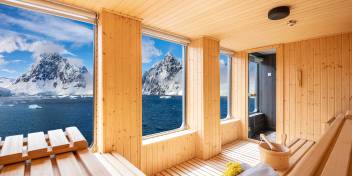
Sauna
Perfectly juxtaposed luxury: guests can rest and relax in the comfort and warmth of the sauna while enjoying the spectacular views outside.
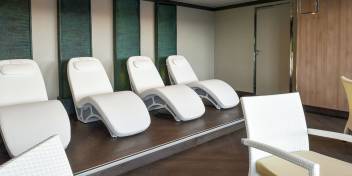
Spa
Offering a variety of treatments exclusively crafted for our guests, the spa allows passengers to fully relax and unwind before their next off-ship adventure.

Polar Boutique
Forgot something at home? Don’t worry. Our Polar Boutique on Deck 4 is stocked with the industry’s top cold-weather expedition gear.
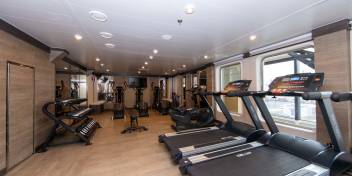
Gym
Located on Deck 4, fitness center hours are posted at the door, with facilities available on a first come, first served basis.

Science Hub
This designated space on Deck 4 enables guests to share knowledge, information and insights with scientists, researchers, and our Expedition Guides.

Cabin Options

Infinity Suite
Located on Decks 5 and 6, and approximately 270 sq. ft. (25 sq. m) in size, these cabins have one double or two single beds, and a floor-to-ceiling glass Juliet balcony. A sitting area with sofa, refrigerator, TV, state of the art “infotainment” system, and private bathroom with shower is also featured in each cabin.
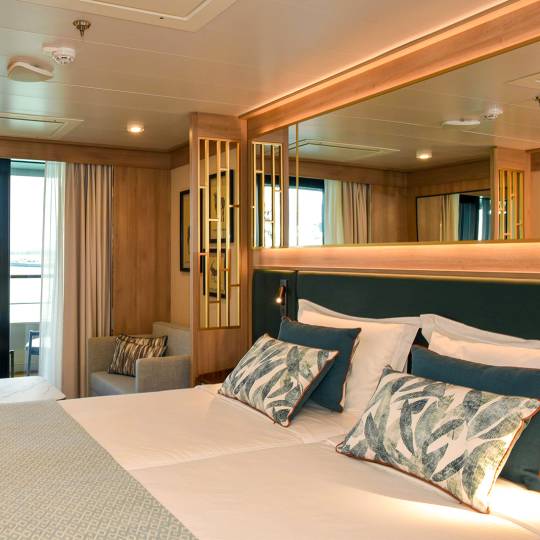
Veranda Suite
Located on Decks 5 and 6, and approximately 215 sq. ft. (20 sq. m) in size, these cabins have one double or two single beds, and a 55 sq. ft. (5 sq. m) walk-out balcony. A sitting area with sofa, refrigerator, TV, state of the art “infotainment” system, and private bathroom with shower is also featured in each cabin.

Owner's Suite
Located on Decks 5 and 6, and approximately 365 sq. ft. (34 sq. m) in size, these cabins have one double or two single beds, and a 100 sq. ft. (9.5 sq. m) walk-out balcony with access from sitting room and bedroom. A separate sitting area with sofa, refrigerator, TV, state of the art “infotainment” system, and private bathroom with shower, dual vanity, and bathtub is also featured in each cabin.

Deluxe Suite
Located on Deck 5, and approximately 345 sq. ft. (32 sq. m) in size, these cabins have one double or two single beds, and a 100 sq. ft. (9.5 sq. m) walk-out balcony with access from sitting room and bedroom. A separate sitting area with sofa, double closets, refrigerator, TV, state of the art “infotainment” system, and private bathroom with shower is also featured in each cabin.

Superior Suite
Located on Decks 5 and 6, and approximately 270 sq. ft. (25 sq. m) in size, these cabins have one double or two single beds, and a 100 sq. ft. (9.5 sq. m) walk-out balcony with access from sitting room and bedroom. A separate sitting area with sofa, walk-in closet, refrigerator, TV, state of the art “infotainment” system, and private bathroom with shower is also featured in each cabin.

Cabin Options

Infinity Suite
Located on Decks 5 and 6, and approximately 270 sq. ft. (25 sq. m) in size, these cabins have one double or two single beds, and a floor-to-ceiling glass Juliet balcony. A sitting area with sofa, refrigerator, TV, state of the art “infotainment” system, and private bathroom with shower is also featured in each cabin.

Veranda Suite
Located on Decks 5 and 6, and approximately 215 sq. ft. (20 sq. m) in size, these cabins have one double or two single beds, and a 55 sq. ft. (5 sq. m) walk-out balcony. A sitting area with sofa, refrigerator, TV, state of the art “infotainment” system, and private bathroom with shower is also featured in each cabin.

Owner's Suite
Located on Decks 5 and 6, and approximately 365 sq. ft. (34 sq. m) in size, these cabins have one double or two single beds, and a 100 sq. ft. (9.5 sq. m) walk-out balcony with access from sitting room and bedroom. A separate sitting area with sofa, refrigerator, TV, state of the art “infotainment” system, and private bathroom with shower, dual vanity, and bathtub is also featured in each cabin.

Superior Suite
Located on Decks 5 and 6, and approximately 270 sq. ft. (25 sq. m) in size, these cabins have one double or two single beds, and a 100 sq. ft. (9.5 sq. m) walk-out balcony with access from sitting room and bedroom. A separate sitting area with sofa, walk-in closet, refrigerator, TV, state of the art “infotainment” system, and private bathroom with shower is also featured in each cabin.

Public Spaces & Amenities

Observation Lounge
The glass-domed Observation Lounge on Deck 7 is a comfortable spot to relax and enjoy panoramic polar views.

Pool and Jacuzzi
Deck 7 features a large heated outdoor pool, surrounded by deck space, and flanked by two Jacuzzis. Availability is subject to opening times on board.

Your Life Onboard






Enjoy panoramic views while you mingle in our comfy lounges, or head outside and chat with fellow adventurers on the wraparound deck. Our social spaces foster connections & shared experiences.

Engage with world-class experts in our auditorium. Presentations cover wildlife, history, marine biology, ecology, & geology, to enhance your polar knowledge & excitement for exploration.

Enjoy onboard amenities, attend lectures, or watch for wildlife from our observation decks. Sea days offer a perfect blend of education, relaxation, and anticipation.

Find tranquility in our well-stocked library, perfect for reading or quiet contemplation. The glass-domed Observation Lounge offers a peaceful retreat to reflect & enjoy awe-inspiring polar views.

Prepare for off-ship excursions in our spacious mudroom. Kayak, paddleboard, or take a plunge in polar waters. Stay active onboard with our gym, outdoor track, and pool facilities.

What’s Included
Specialist Expedition Leaders
Our team is comprised of the most professional and passionate Expedition Leaders in the world, who bring a wide range of experience and expertise to every adventure.
Immersive Off-ship Activities
Itineraries are packed with adventure options designed to immerses travelers in the polar wilderness, enabling them to connect with the natural wonders of their surroundings.
On-Ship Experiences & Facilities
Designed for comfort and adventure, each ship accommodates no more than 200 guests. Facilities include comfortable cabins, exceptional dining options, wellness treatments, and breathtaking panoramic views of the polar landscape.
Food & Beverages
Premium dining, with a wide selection of options that accommodate a variety of dietary preferences.
Quark Expedition Perks
Complementary Wi-Fi, alcohol on all voyages, and the Official Quark Expeditions parka to take home.
Transfers
Select voyages include essential transportation and accommodation arrangements for guests, ensuring seamless travel to and from the expedition starting point.
International airfare & visa expenses, travel insurance, mandatory expedition gear, on-ship expenses, adventure options and trip extensions are not included.
World Voyager guests will receive a free 1GB data card for limited Wi-Fi access. (Additional data can be purchased on the ship.)
Possible Excursions
Departure Dates & Cabins
Know Before You Go
For your personal safety—and to ensure you get the most enjoyment out of your polar adventure—please assess your mobility and medical requirements before booking. It is essential that guests have a high level of mobility to get in and out of Zodiac boats, and for off-ship activities such as hiking on uneven terrain. Our destinations are remote. Apart from our basic ship infirmary, it could take up to 72 hours to reach adequate medical facilities. For more details to help you assess your mobility and medical requirements before booking your voyage, please review Health & Safety.
Some of our expeditions have included transfers and these will be detailed in your Invoice and Trip Brochure.
Please note that if you have an airport transfer included in your trip, it is only available if you arrive on Day 1 of the itinerary. Please ensure your flight information on your Passenger Forms is up to date so our ground crew know when to expect you. There will be someone with a sign in Arrivals waiting for you. Please look for them and they will direct you to our group shuttle.
If you do not have included transfers, or you are arriving before Day 1, you will need to make your own way to the hotel. Most airports we travel in and out of have good taxi ranks in the Arrivals area, or you can often prebook a transfer online.
Packing is an exciting part of the trip for many of us. You will find a handy packing list towards the end of your Trip Brochure. You will have received a copy of this when you first booked. We also have two excellent videos, which you can check out here: What to Pack
Our Protection Promise allows you to make a purchase decision that will leave you worry-free in the event your plans change down the road. Please review details for each term in our Quark Expeditions Protection Promise.
Whether you are thinking of an expedition, or you’ve booked the trip of a lifetime with Quark Expeditions, review all our FAQs for comprehensive tips to help you prepare for the Polar Regions and how to make the most out of your voyage with the most experienced expedition team in the industry. If your specific question isn’t covered below, please reach out to your Polar Travel Advisor or helpful Client Experience Team at guest@quarkexpeditions.com.

